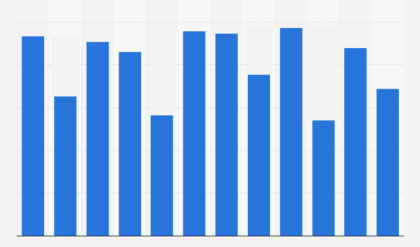What is the impact of informality on the formal economy? Loayza (1996) tests for Latin American countries in the 1990s predictions from his theoretical model: Countries with large tax burden and weak enforcement system should show a negative relationship between the size of the informal sector and economic growth.13 Results are confirmed with countries with very restrictive labour market regulations and poor enforcement systems showing the largest informal sector (i.e., Bolivia, Panama, and Peru). Loayza (1996) also finds a negative relationship between the size of the informal sector and real GDP growth. In general, the relationship between informality and growth can be viewed in two of the following ways. Following Loayza (1996), the informal sector restrains growth because it reduces labour market productivity and hinders the enjoyment of public goods on the side of both workers and producers. An alternative hypothesis is that, in a world with various kind of imperfections (i.e., labour market regulation, corruption, etc.), the informal sector increases efficiency and so it has a positive impact on economic growth. Nikopour et al. (2008) reviews several papers investigating empirically the relationship between informality and growth for 21 OECD countries and concludes in favor of a positive impact of informality on growth.
Rei and Battacharya (2008) use regression analysis on low and middle-income countries’ data to establish possible drivers of informality. Using Schneider (2005) data they find no general evidence on the impact of higher taxation and labour market regulation, but these results are not robust to the inclusion of indices of public and corporate governance. The main finding then is that strong or stronger governance favors formality.
D. Main Stylized Facts
Informal employment
Looking at the empirical literature discussed above, the following stylized facts emerge:
· developing countries tend to have a higher degree of informality than OECD countries (stylized fact 1, hereafter SF 1);
· many countries reveal an increasing trend of informality (SF 2).
Those stylized facts on the size and trends across time seem to be confirmed by specific studies in India by the (NCEUS). The official estimates, that identify the informal economy with the unorganized sector plus informal jobs in the organized sector, point to a growing trend of the already dominant unorganized sector in India. Also, another interesting stylized fact emerges:
· the informalization of the formal sector (SF 3).
With this definition, the Commission implies that there has been an increase in informal job (i.e., without job/social security) within the formal/organized sector. A similar trend is confirmed for Argentina and other Latin American countries in Perry et al. (2007) and Bosch and Maloney (2006). Bosch’s modeling strategy described in chapter IV.C explains these stylized facts (i.e., the stipulation of informal contracts within a formal firm) through a stochastic job matching model.
An analysis of Mexican and Brazilian labour markets shows they have a relatively low unemployment rate compared to OECD countries. Bosch and Maloney (2006, 2007), looking at microeconometric evidence from gross worker flows in Brazil and Mexico claim that as a result of downturns and policy reforms, informal employment has changed considerably due to the following stylized facts:
· the job finding rate of formal jobs is highly procyclical (volatility puzzle), while the job finding rate of informal jobs is more stable (SF 4).
· the job separation rate in informal jobs is more responsive to negative shocks even though the separation rates for formal and informal jobs are both countercyclical (SF 5).
In general, Bosch and Maloney (2006, 2007) find that the hiring behavior of formal firms is the main driving force to affect the share of formal employment.
· During a recession, despite the large increase in the job separation rate for informal jobs, the share of formal jobs decreases (SF 6).
Also, and related to this, the evidence from Mexico and Brazil shows that flows from the informal to the formal sector are highly pro-cyclical while flows in the other direction are procyclical, but less volatile. As before, Bosch (2006, 2007) attempt to develop a theoretical framework to capture those stylized facts. Even though informality is mainly concentrated in the non-tradable sector, the author claims there is a need to model the change of the formal employment share within industries and occupation. This is in contrast with the idea that a change in the share of informality is due to sectorial changes as discussed in the NCEUS report whose findings point to an increasing trend towards more flexibility of employment, outsourcing and the growth of telecommunication and IT services as a possible explanation of the increasing share of informal employment in India.
Maloney (1999, 2004) provide evidence against the segmentation assumption. Maloney (1999) shows that despite a very large informal sector, labour markets are mobile and wages are flexible. Maloney (2004) shows that in many Latin American countries the informal sector is mostly voluntary. Finally, the evidence for Latin American countries shows that the informal labour market is ultimately heterogeneous and composed by, both self-employed and salaried workers.
Stylized facts on the cyclical behavior of informality are ambiguous. Normally, the informal sector expands during downturns (see previous stylized facts), but there is also evidence of pro-cyclical movements of the informal sector. Fiess et al. (2006) and Perry et al. (2007) provide a theoretical explanation in terms of asymmetric shocks between tradable and non-tradable sectors.
Empirical evidence on income and education between sectors point to the following stylized facts. Mastalioglu and Rigolini (2006) show that:
· there is a negative correlation between the informal sector employment and education within countries as well as between informal employment and average education attainment across countries (SF 7).
Albrecht et al. (2008), described in chapter IV.B, provides an interesting framework to explain the facts above described. As the authors point out, their model is useful to explain the dynamics of the informal employment in many Latin American countries where it appears that the informal sector is an unregulated labour market in which low ability workers decide to work mainly with the status of self-employed. A similar view is adopted by Boeri and Garibaldi (2005) in chapter IV.A. Micro-level data for Italy show that shadow jobs are filled mainly by unskilled and lower educated workers (see SF 7). Cross-county and regional data for Brazil and Italy (i.e., two countries with a large informal economy) provide evidence of:
· a positive correlation between unemployment and shadow employment (SF 8).
An attempt to explain the possibility that Governments hide high level of unemployment with the presence of a large informal sector is provided in the theoretical chapter of their paper.
Given that the search matching literature is mainly based on the idea that workers are free to choose between formal and informal sector, the empirical question related to the segmented or voluntary choice view of informality requires further investigation. Bosch and Maloney (2006) provide evidence that the performance of labour markets is asymmetric during business cycles. In particular, it supports the voluntary decision during expansion while it is in favor of segmentation during recessions. As pointed out in Perry et al. (2007), voluntary entry may not rule out some degree of market segmentation. While individuals are free to choose between the two sectors, the introduction of various labour market regulations make informal jobs less attractive or decrease the number of formal vacancies. In this sense, the search-matching literature reviewed in chapter IV is able to take this sort of flexibility into account. See Satchi and Temple (2009) and Zenou (2008), reviewed in this survey, for a modeling strategy with search frictions focusing on the dualistic nature of informality.
Evidence on Latin America in favor of the existence of a wage premium for formal workers is ambiguous and depends on the category of informal job (i.e., self-employed are in general better paid than salaried workers). Different views are reported in the NCEUS report. In India the bulk of organized sector employment is paid employment (casual and regular/salaried), while the bulk of the unorganized sector is self-employment and poor quality casual workers. The report finds that while there seems to be no apparent different in wages for casual workers, regular workers in the informal sector are paid considerably less than their informal counterparts. Similar findings are reported in Badaoui et al. (2006) following an econometric studies using the South African Labor Force Survey.15
Further support of the segmented view can be found in Martin (2000) who shows that in Mexico:
· the unemployment rate in the 1990’s was low (3.7 percent) and composed mainly by well-educated (SF 9).
This evidence has been formalized by Satchi and Temple (2009) in a search matching model where workers who do not find a job are unlikely to have any other choice than to turn to the informal sector.
Furthermore, Wahba and Zenou (2005) show that:
· in Egypt, 70 percent of workers obtain a formal job through formal methods (SF 10).
This fact is examined further in Zenou (2008) and in a general equilibrium framework by Batini et al. (2009).
Ihrig and Moe (2004) reviewed in chapter VI.A attempt to explain the following stylized facts:
· a negative and convex relationship between informal employment and country’s standard of living (SF 11).
· a positive relationship between informal employment and tax rate (SF 12).
Refer to Figures 1 and 2 in Ihrig and Moe (2004).
Finally, as far as the link between informality and (gender) inequality is concerned, various studies, including Chen (2007) report that informal employment is an important source of employment for women than for men in LDCs and globally the following stylized facts emerge:
· a significant gap in earnings within the informal economy with employers at the top segment followed by their employees (regular salaried) and by casual workers (SF 13).
· men are over-represented in the top segment while women are over-represented in the bottom segment and the share of women/men in the intermediate segments varies across sectors and countries (SF 14).
From those facts emerge an informal sector which is mainly voluntary for employees while salaried and casual workers are often left with no other choice than to accept the job available for them given their skills and constraints (i.e., women and requirement of flexibility). We think, more theoretical work is required to address stylized facts 13 and 14.






Comments are closed.